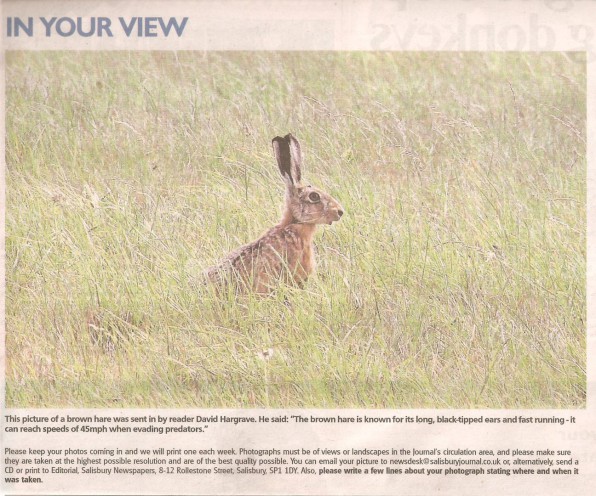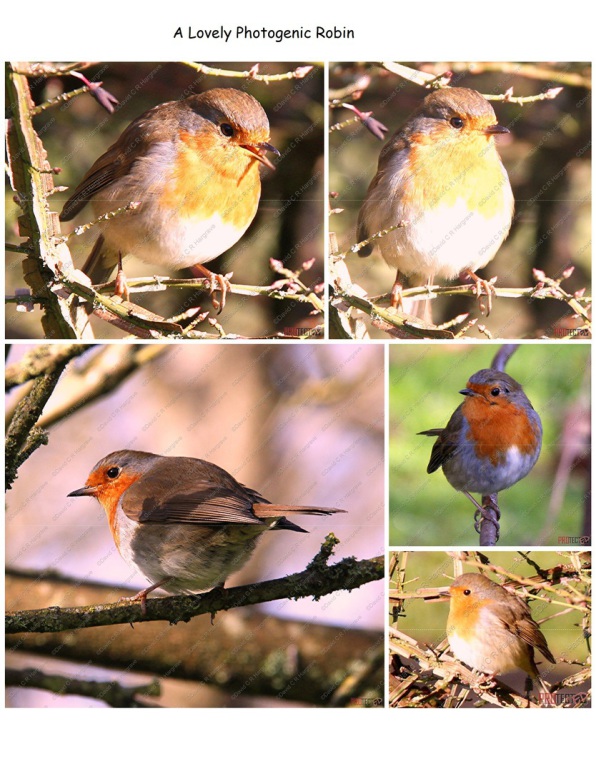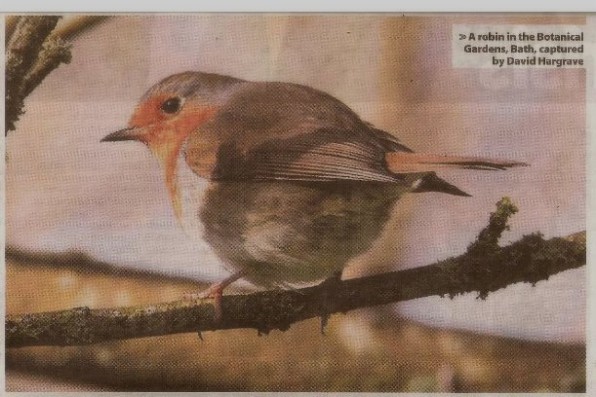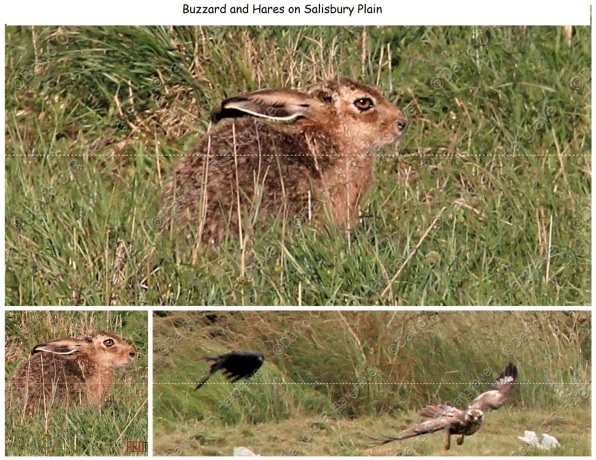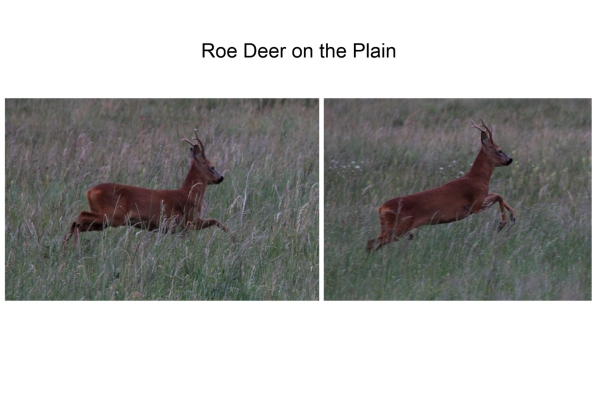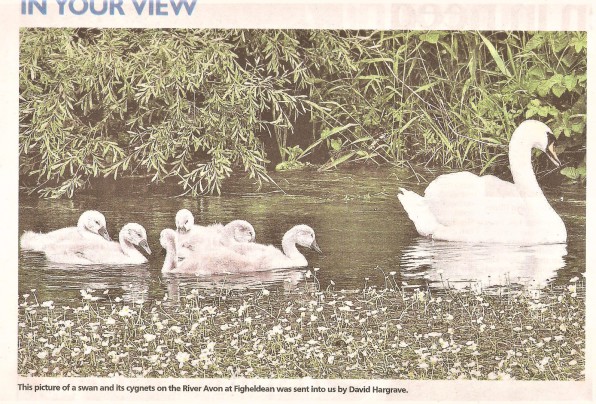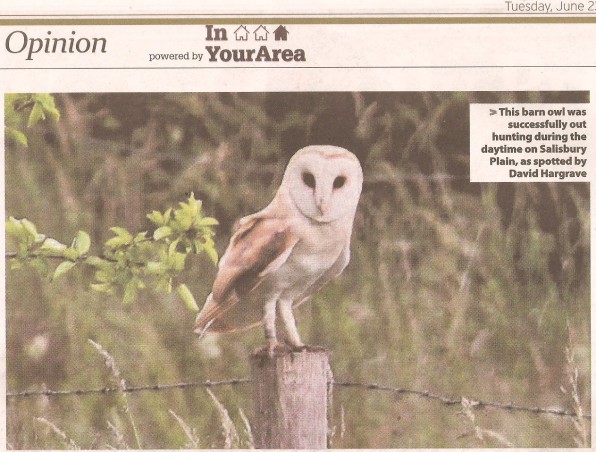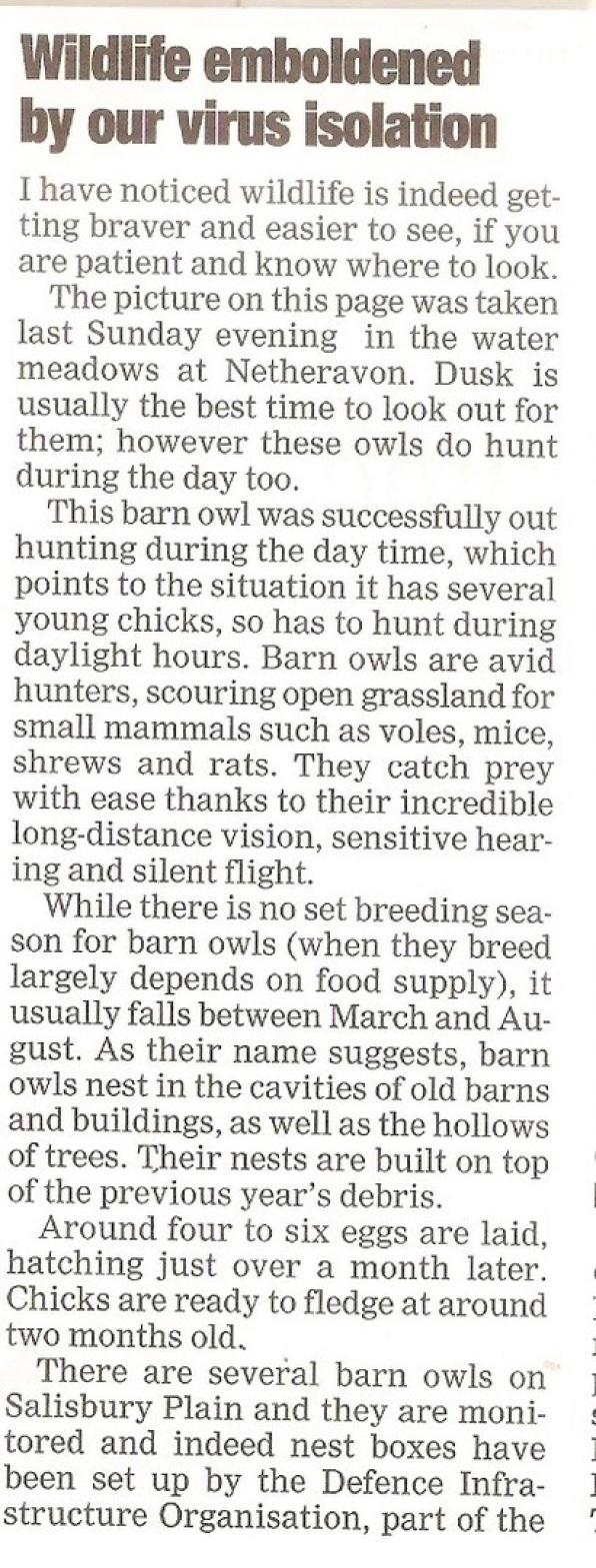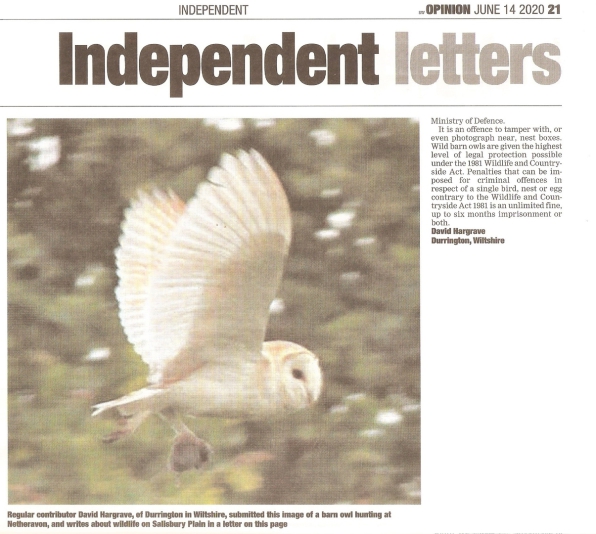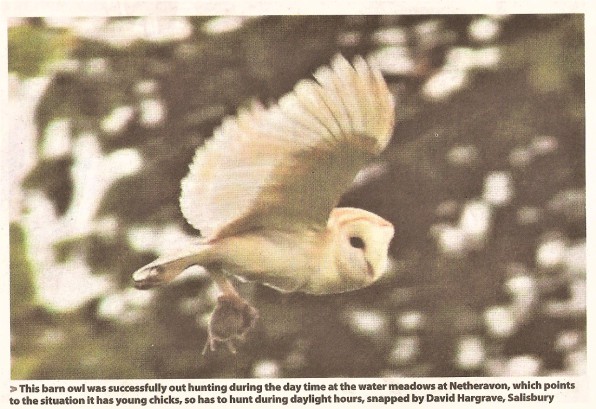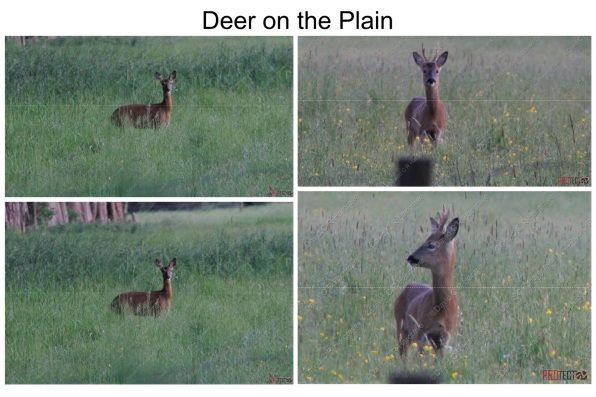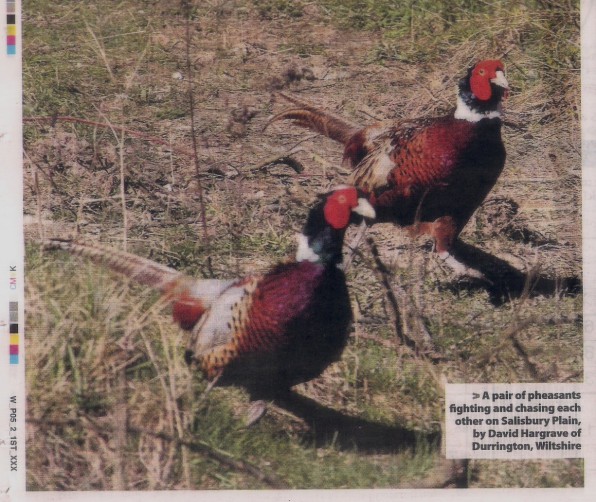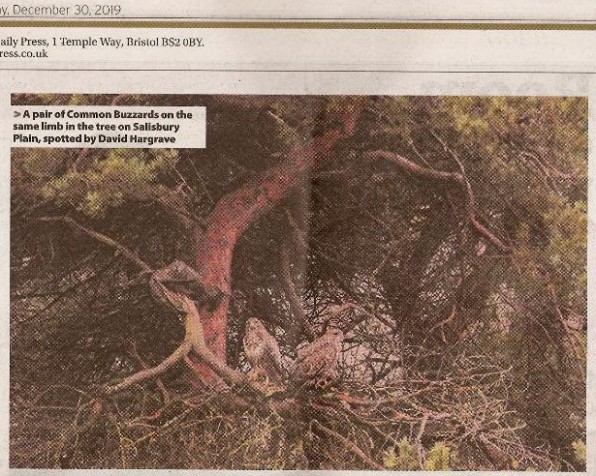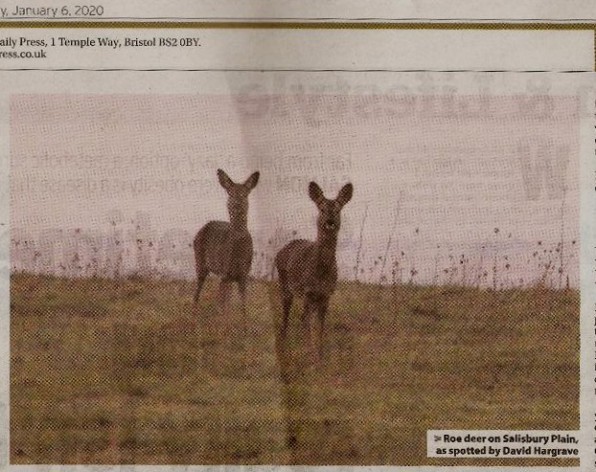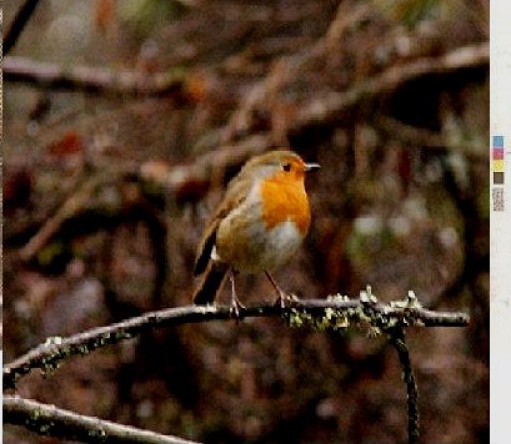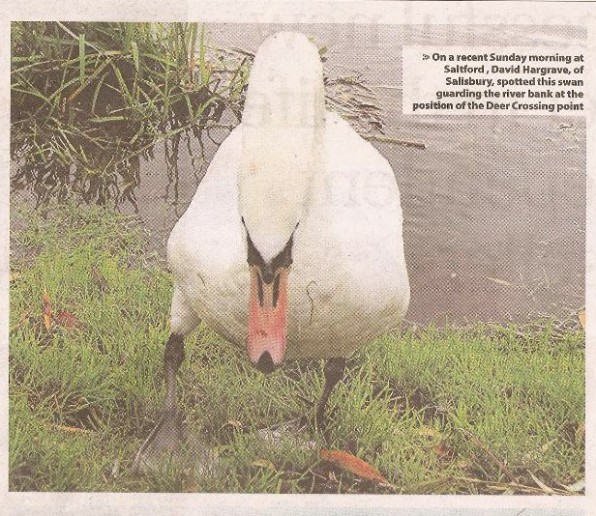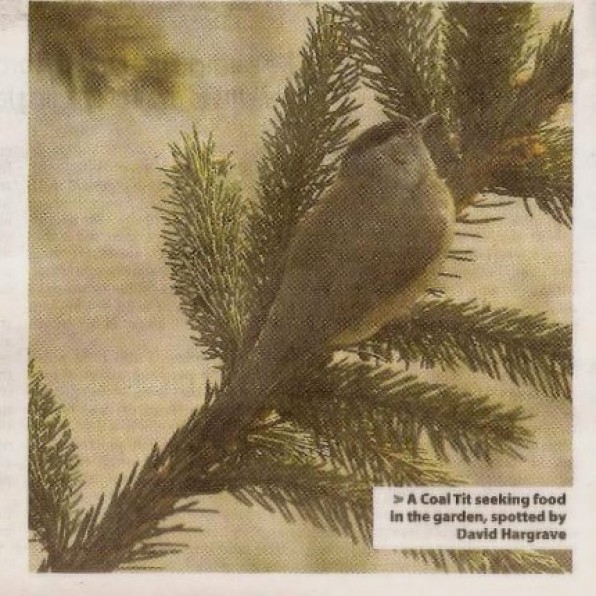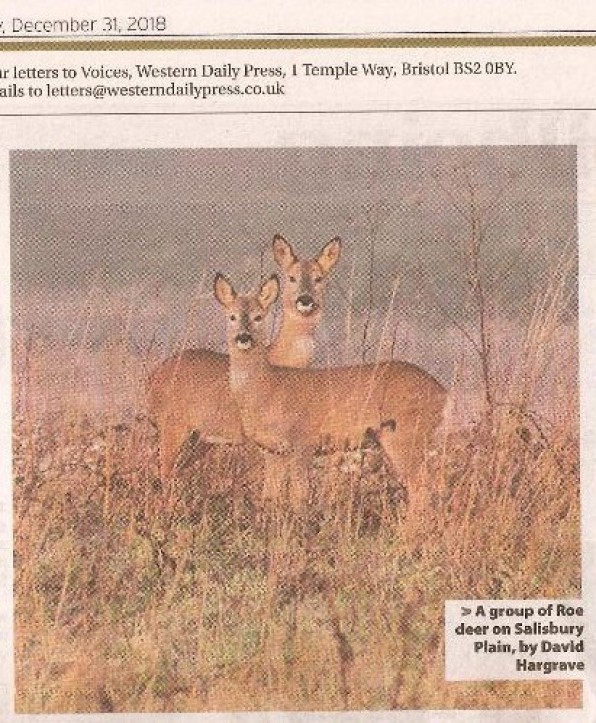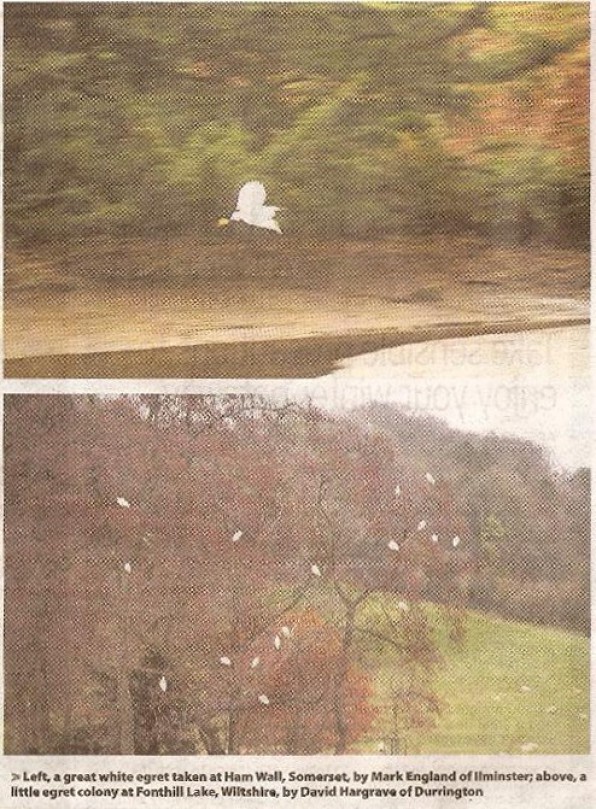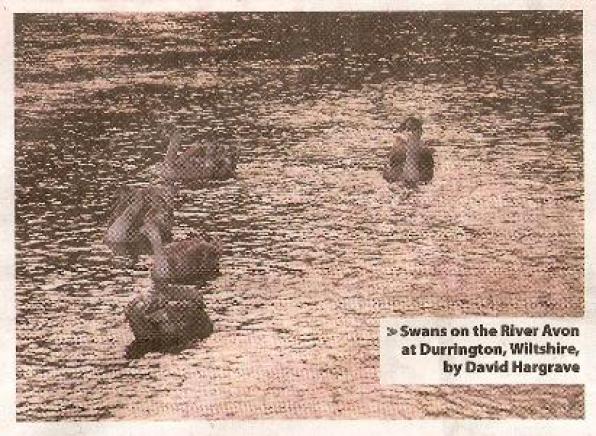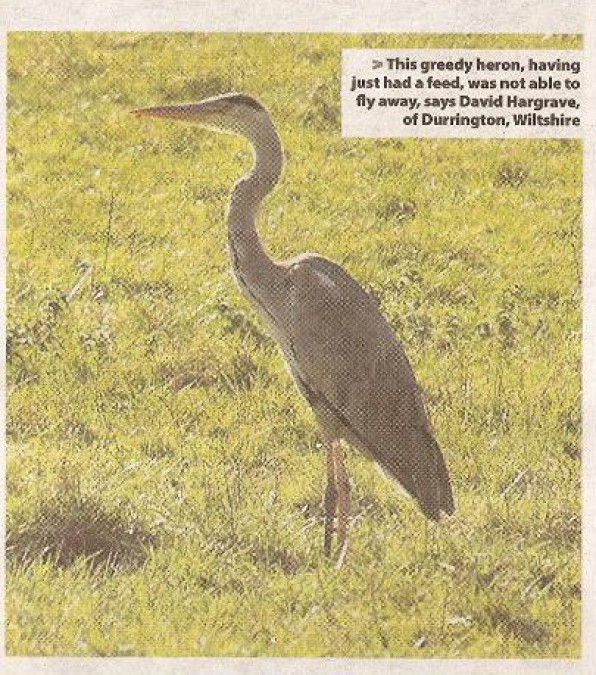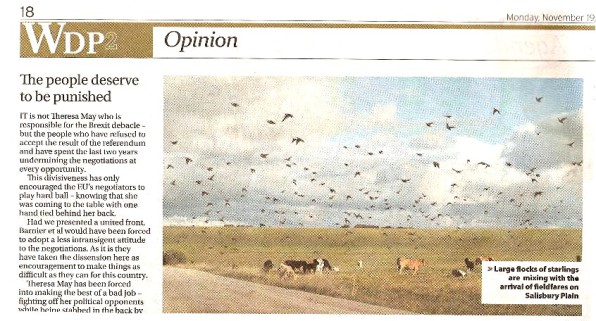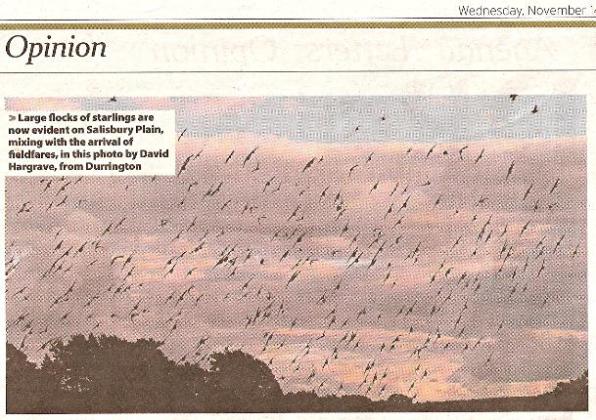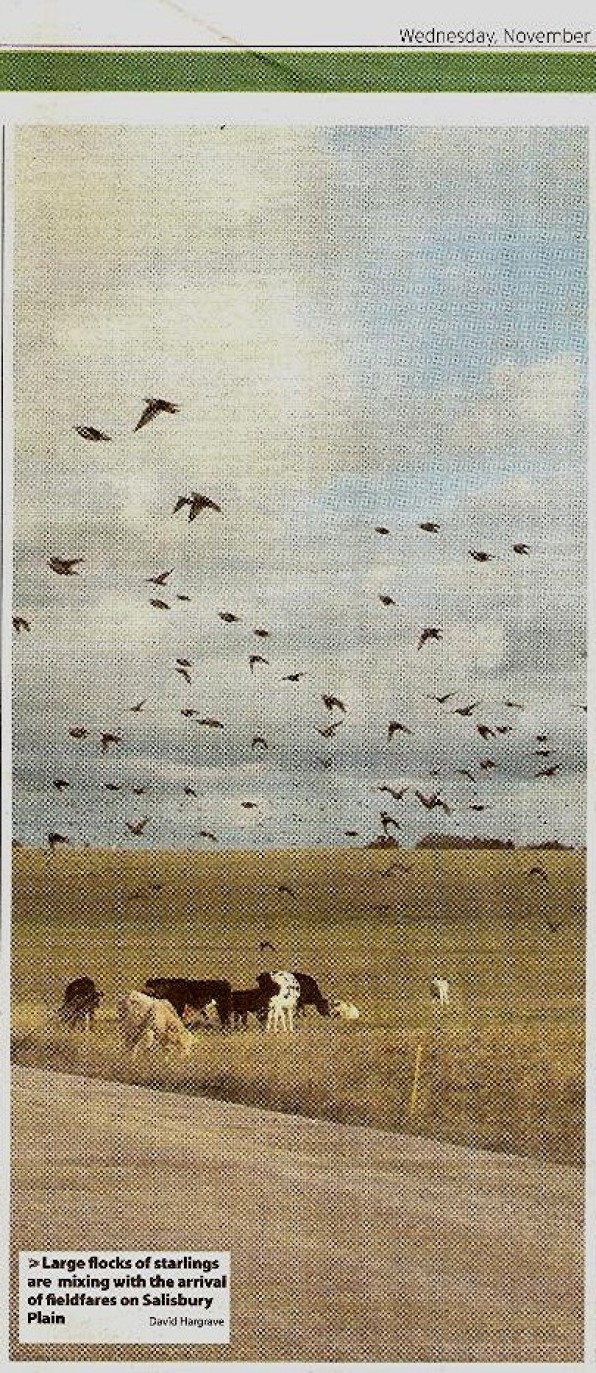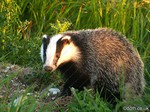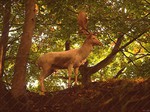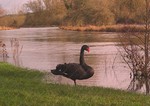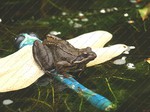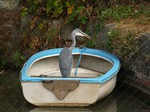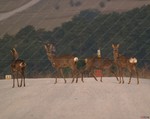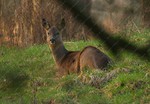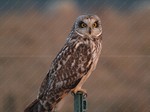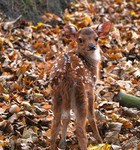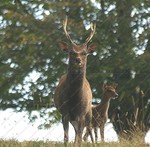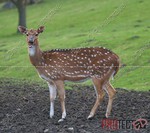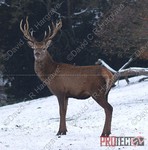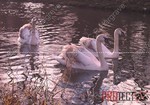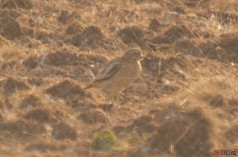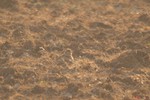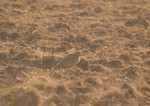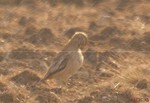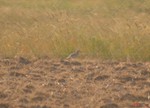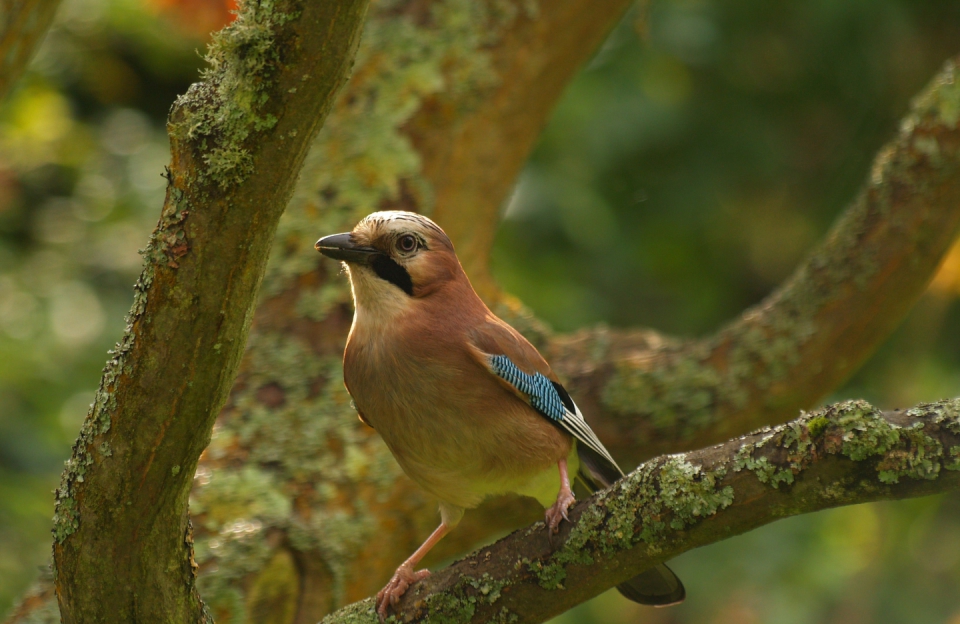
Wildlife Photographic Gallery
As I have said on the animal photography page, this will just be a gallery of photographs that I have been lucky enough to capture in and around Salisbury Plain and on my journeys further afield.
I plan to update it periodically with new photographs. Wildlife photgraphy is a case o being in the right place at the right time!
Brown Hares seen Locally - 09.08.20.
These photographs were taken locally.
The brown hare is known for its long, black-tipped ears and fast running - it can reach speeds of 45mph when evading predators. It prefers a mosaic of farmland and
woodland habitats and can often be spotted in fields.
Thought to have been introduced into the UK in Roman times (or even earlier), the brown hare is now considered naturalised. It is most common in grassland habitats
and at woodland edges, favouring a mosaic of arable fields, grasses and hedgerows.
It grazes on vegetation and the bark of young trees and bushes. Brown hares do not dig burrows, but shelter in 'forms', which are shallow depressions in the ground or
grass; when disturbed, they can be seen bounding across the fields, using their powerful hind legs to propel them forwards, often in a zigzag pattern.
Brown hares are at their most visible in early spring when the breeding season encourages fighting or 'boxing'. Females can produce three to four litters of two to
four young (known as leverets) a year.
If you spot brown hares 'boxing' in the fields, it is most likely that you are watching a female warding off the advances of an amorous male, not two males
fighting.
If a fight does happen, the two hares will stand on their hind legs and attack each other with their front paws, pulling out fur. This gives the impression of two boxers
in a ring.
Peahens and Chicks - 28.07.20
I came across these near Beacon Hill.
When peahens have the opportunity and inclination to care for their young, they are good parents.
Perhaps the most important skill peachicks must learn is how and what to eat.
Peahens walk around with their chicks and vocalize and teach them which foods are appropriate choices.
Peahens spend most of their time in close proximity to their babies and will aggressively protect them from predators.
Baby peafowl are considered chicks until they are 1 year old and will require extra care and supervision during most of this time.
They are capable of flying when they are only a few days old but can easily injure themselves or fall.
Peacocks can live 30 to 40 years, though peachicks are highly vulnerable and can die of numerous causes in the first year of life.
Skylark - 23.06.20
The skylark is a small brown bird, somewhat larger than a sparrow but smaller than a starling. It is streaky brown with a small crest, which can be raised when the
bird is excited or alarmed, and a white-sided tail.
The wings also have a white rear edge, visible in flight. It is renowned for its display flight, vertically up in the air.
Its recent and dramatic population declined making it a red List species.
Kestrels - 11.06.20
The Kestrel (Falco tinnunculus) is also known as the European Kestrel, Eurasian Kestrel or Old World Kestrel.
The common Kestrels are found in a wide variety of habitats, from moor and heath, to farmland and urban areas.
The only places they do not favour are dense forests, vast treeless wetlands and mountains.
They are a familiar sight, hovering beside a motorway or other main road. They can often be seen perched on a high tree branch or on a telephone post or wire, on the look out for prey.
Kestrels nest in holes in trees or on a ledge on cliffs or buildings and simply line the hole or ledge with sticks and straw. Kestrels do not build their own nests, but use nests built by other species.
Kestrel Diet
Kestrels feed mainly on small mammals, such as voles, shrews, mice and birds as large as Starlings. However, kestrels are adaptable birds and will switch to invertebrates such as beetles, earthworms, grasshoppers or even snails. In gardens, they will take meat scraps.
In addition to having exceptionally good eyesight, Kestrels can also see ultra-violet light. This is useful in locating voles because they leave a trail of urine
wherever they go and the urine glows in
ultra-violet light.
While hovering, the Kestrels head is kept perfectly still giving it the ability to spot the slightest movements on the ground.
When suitable prey is in sight, the Kestrel drops vertically towards the ground, swooping to grab its prey in its talons and killing it with a swift bite.
Kestrels can often be found hunting along the sides of roads and motorways.
Kestrels also frequently use pylons or telegraph poles as vantage points to spot prey, saving themselves the effort of hovering. Kestrels are bold and have
adapted well to human encroachment, nesting
in buildings and hunting by major roads.
In more northerly and westerly areas of Britain, kestrels often migrate south at the end of the breeding season, but return the following spring to form their territories.
In winter many more kestrels visit from the Netherlands and Scandinavia.in. The population of breeding pairs in Britain is around 38,600.
The Pied Wagtail - 07.06.20
The Pied Wagtail is a small black and white (pied) bird with a long tail that is sometimes mistaken to be a young Magpie, but is much smaller than a Magpie; in fact, it
is only a little bigger than a Great Tit. The most distinctive feature is its wagging tail - it never stops!
Barn Owl - 07.06.20
Dusk is usually the best time to look out for barn owls; however these owls do hunt during the day too.
This barn owl was successfully out hunting during the day, which probably means they have several young chicks, so has to hunt during daylight hours.
Barn owls are avid hunters, scouring open grassland for small mammals such as voles, mice, shrews and rats.
They catch prey with ease, thanks to their incredible long-distance vision, sensitive hearing and silent flight.
While there is no set breeding season for barn owls (when they breed largely depends on food supply), it usually falls between March and August.
As their name suggests, barn owls nest in the cavities of old barns and buildings, as well as the hollows of trees. Their nests are built on top of the previous
year’s debris.
Around 4-6 eggs are laid, hatching just over a month later. Chicks are ready to fledge at around two months old.
There are several Barn Owls on the Plain and they are monitored and indeed nest boxes etc have been set up by the DIO, part of the MOD.
It is an Offence to tamper or even photograph near to their nest box etc.
Wild barn owls are given the highest level of legal protection possible under the 1981 Wildlife and Countryside Act. Penalties that can be imposed for criminal
offences in respect of a single bird, nest or egg contrary to the Wildlife and Countryside Act 1981 is an unlimited fine, up to six months imprisonment or both.
Great Tit Parents with Chicks - 05.06.20
The photographs were taken of these Great Tit Parents and their chicks, which are nearly ready to fly from the nest (an old Flower pot hanging on a shed).
I had to be quick to get these photographs so as not to disturb the activity, therefore apologies for the quality.
The great tit is a distinctive bird with a black head and neck, prominent white cheeks, olive upper parts and yellow underparts, with some variation amongst the numerous
subspecies. It is predominantly insectivorous in the summer, but will consume a wider range of food items in the winter months, including small hibernating bats Like all tits it is a cavity
nester, usually nesting in a hole in a tree.
The female lays around 12 eggs and incubates them alone, although both parents raise the chicks. In most years the pairs will raise two broods.
Red Kites - 21.05.20
These photographs were taken today on the Plain. The red kites were flying over the Farmers mowing the grass for silage.
Persecuted to near extinction in the UK, the red kite has made a tremendous comeback thanks to reintroduction programmes.
Once a very rare bird that could only be found in Central Wales, the red kite has been successfully reintroduced to several areas of the UK and can now be seen in Wales,
Yorkshire, the East Midlands and the Chilterns.
A large, graceful bird of prey, it soars over woods and open areas, its distinctive shape and 'mewing' calls making it easy to identify. Red kites were routinely persecuted as hunters of game and domestic animals, but they are in fact scavengers, eating carrion and scraps, and taking only small prey like rabbits. Seeing one of these magnificent birds soaring high in the sky is a true delight.
Red kites were common in Shakespearean London, where they fed on scraps in the streets and collected rags or stole hung-out washing for nest-building materials.
Shakespeare even referred to this habit in 'The
Winter's Tale' when he wrote: 'When the kite builds, look to lesser linen'. The nest of a red kite is an untidy affair, often built on top of an old Crow's nest. It is lined with
sheep's wool and decorated with all kinds of objects like paper, plastic and cloth.
Lapwings - 23.03.20
Lapwing is a good example of a species that can be affected by severe cold weather, causing populations on the Continent to evacuate their traditional wintering areas and
move westwards to Britain and Ireland in search of milder conditions.
They usually return when the conditions improve, often before the spring.
Lapwings breeding in Britain and Ireland are partial migrants, with many remaining through the winter close to their breeding grounds whilst others migrate.
Information from ringing shows that Lapwings from the north and northwest of Britain move westwards in the autumn, with some going to Ireland and others into France and
Iberia.
Lapwings from the southeast part of Britain move mainly southwards to France and Iberia.
Salisbury Plain has large flocks of these birds arrive in the spring and set up home to nest in the cultivated plots on the plain quite often with the Stone Curlews for
neighbours.
This pair had just arrived from migration and were sheltering by a large puddle following a recent wet spell on the Plain.
Male Pheasants - 23.03.20
These male pheasants are totally oblivious to me sat watching them, they were so busy fighting and chasing each other to set up a harem and territory.
The information below is taken from the internet:
Pheasants are large, long-tailed gamebirds. The males have rich chestnut, golden-brown and black markings on their bodies and tails, with a dark green head and red
face wattling. Females are mottled with paler brown and black.
They were introduced to the UK long ago and more recent introductions have brought in a variety of races.
As spring approaches, distinctive changes occur in the ring-necked pheasant. In response to lengthening days, the pituitary gland in the brain becomes active,
triggering the production of hormones which stimulate courtship behavior.
The courtship dance marks the beginning of the reproductive cycle; spring is a natural point at which to begin a description of the pheasant life cycle. In order to cope
with the rigors of mating, nesting and brood rearing, hens attain their peak weights in spring; they must gather reserves of energy to support egg-laying and to produce the heat necessary for
incubation.
Usually beginning in late March, and peaking in May, roosters claim territories.
Within these areas, which may range in size from a few acres to a half section or more, the roosters strut and crow, tolerating no intrusion by other males. A rooster's
raucous crowing, followed by a rapid beating of wings, proclaims that this is his territory; his aggressive behavior apparently demonstrates to prospective mates that his is desirable genetic
material, and that his offspring are likely to be hardy.
The second and most dramatic phase of courtship occurs after the hen is attracted to a rooster's territory. He approaches the hen, tilts his body toward her, spreads his
tail feathers, and extends one wing downward. His head is held low with ear tufts erect and neck feathers flared. The lores (or wattles) on the sides of his head turn a vivid shade of red and swell
until they nearly touch on top of the head. His yellow eyes appear vacant, and he seems to be completely ruled by the biological instinct to reproduce.
Early in the season, hens show little if any interest in the rooster's displays. They may watch briefly, then continue feeding. As the nesting season approaches, hens
become more attentive, and finally they select roosters with which they will breed. Pheasants are polygamous, and a rooster will gather as many hens as possible into a "harem."
The gender ratio in the spring breeding population usually averages about 2 1/2 hens per rooster. Since harems average three or four hens per rooster, there are always
roosters which do not mate. "Bachelor" birds tend to be a disturbing influence in the breeding population, roaming about as they try to gather their own harems, picking fights and assaulting
hens.
All of these bachelor roosters and even many of those which did acquire mates, are surplus to the reproductive needs of the species.
A spring sex ratio of six to 10 hens per rooster would be sufficient to ensure species reproductive success. After fertilization takes place, courtship ends. The hen
chooses a nest site, lays and incubates the eggs, and broods the chicks with no help from the male, whose reproductive role ends with mating.
Early in the nesting season, hens may seem rather careless about egg laying. Eggs may be dropped at random and left unconcealed.
Later, a hen may initiate a nest, lay a few eggs in it, and then abandon it. Frequently, several hens lay eggs in a single nest, termed a "dump nest" by biologists. It is
not uncommon for a dump nest to contain 20 to 30 eggs. As spring progresses, random egg laying ceases.
Pheasants are ground nesters, whose nests consist of small depressions lined with grass, leaves and other plant material. Down, feathers and additional vegetation are
added as egg laying and incubation progresses.
A nesting hen lays eggs at a rate of about one per day. She remains at the nest only to deposit eggs, which may number from one to 20 when the clutch is completed; the
average in North Dakota is 11 eggs.
When the clutch is complete, incubation begins. Just prior to egg laying, hens shed breast feathers, exposing a bare patch of skin. This"brood patch" is well supplied
with surface blood vessels, and keeps the eggs at the proper temperature for hatching. During egg laying, the hen seems only a casual visitor to the nest, staying just long enough to deposit each
egg. During incubation, however, she leaves the nest only for a brief period each day.
Pheasant eggs require approximately 23 days of incubation. During this period, the hen turns the eggs frequently. Although eggs are laid individually over a two-week
period, incubation of all eggs begins at the same time and all hatch within a few hours of each other.
Muntjac and Kestrel - Salisbury Plain 27.06.19
This youngster was asleep in the long grass on the Plain, in an area that was about to be mown for hay. Not quite sure who was the most startled the deer or
me! They are normally a very shy animal and not often seen close up.
I also managed to capture the kestrel in a tree, keeping an eye on me!
Red Kite - 26.04.19
These photographs were taken this morning near Salisbury Plain. Having spent quite a few hours on different occasions, I was finally rewarded with the
photographs attached.
I observed these birds for quite a few weeks and traced their flying positions over a nearby hill top. After speaking to a local farmer and gaining his permission
to enter his field, I sat and waited for the birds to appear. For a few days nothing happened or due to weather conditions, they kept to different flight paths.
Today things went rather well, the birds knew I was there but did not seem to be worried, in fact on a few passes they seemed to be looking straight at me.
Stone Curlews on Salisbury - 25.03.19
The Stone Curlews arrived on the Plain, we first heard and saw them this evening 25th of March.
This follows the plots being prepared by the local farmers, by cultivation and leaving the ground fallow.
The birds travel here to breed from Africa every year, arriving here usually around the the 23rd of March.
This week it appears that they have been sheltering in the long grass areas, around the cultivated plots and the arable crops which have started to grow.
Blackcap (Sylvia atricapilla) - 10.01.19
Following a few mornings of frosty weather I found this frequent visitor.
The Blackcap is a distinctive greyish warbler, the male has a black cap, and the female a chestnut one. Its delightful fluting song has earned it the name 'northern nightingale'. Although primarily a summer visitor, birds from Germany and north-east Europe are increasingly spending the winter in the UK.
Blackcaps are best looked for in woodland, parks and gardens with plenty of trees and shrubs. In winter they will readily come into gardens. They eat insects and berries.
Little Egret (Egretta Garzetta) - 27.11.18
These Little Egret have a colony at Fonthill Lake. These birds are now in numbers at Fonthill and other local spots. In the past few years they have even
migrated up onto Salisbury Plain and can be spotted in quite a few spots on the River Avon.
Breeding was first recorded in Britain in 1996 and by 1999 at least 30 pairs nested, usually within existing Grey Heron colonies.
Stone Curlews - 10.07.13
We now have quite a few Stone Curlews with their young, who are almost adult, they are running about and flying about, albeit rather precariously, when
landing.
I watched these youngsters as they came out of the corn field, where they stay during the day for protection and then they come out onto the tracks, to forage, eat grit
and drink from the puddles, before heading back into the cornfields.
These youngsters are at the stage, where their plumage is showing quite well and they are busy preening to remove the last of the down.
It is quite interesting to see that none of the 6 adults I saw this evening or any of the 5 youngsters, have rings on their legs. This makes it impossible to
calculate how many birds there are here on the Plain, as only ringed birds are counted, therefore, we do not have an accurate record,
If this is the case on other sites, which I cannot say as I have not visited them, we could have quite a gathering later, when the harvesting is completed and the birds
feed in numbers on the stubble fields.
It will be interesting to see how many return next year, after running the gauntlet of the weather, predators and the Europeans, who shoot a large number of them, despite
the birds being a rare protected species here.
